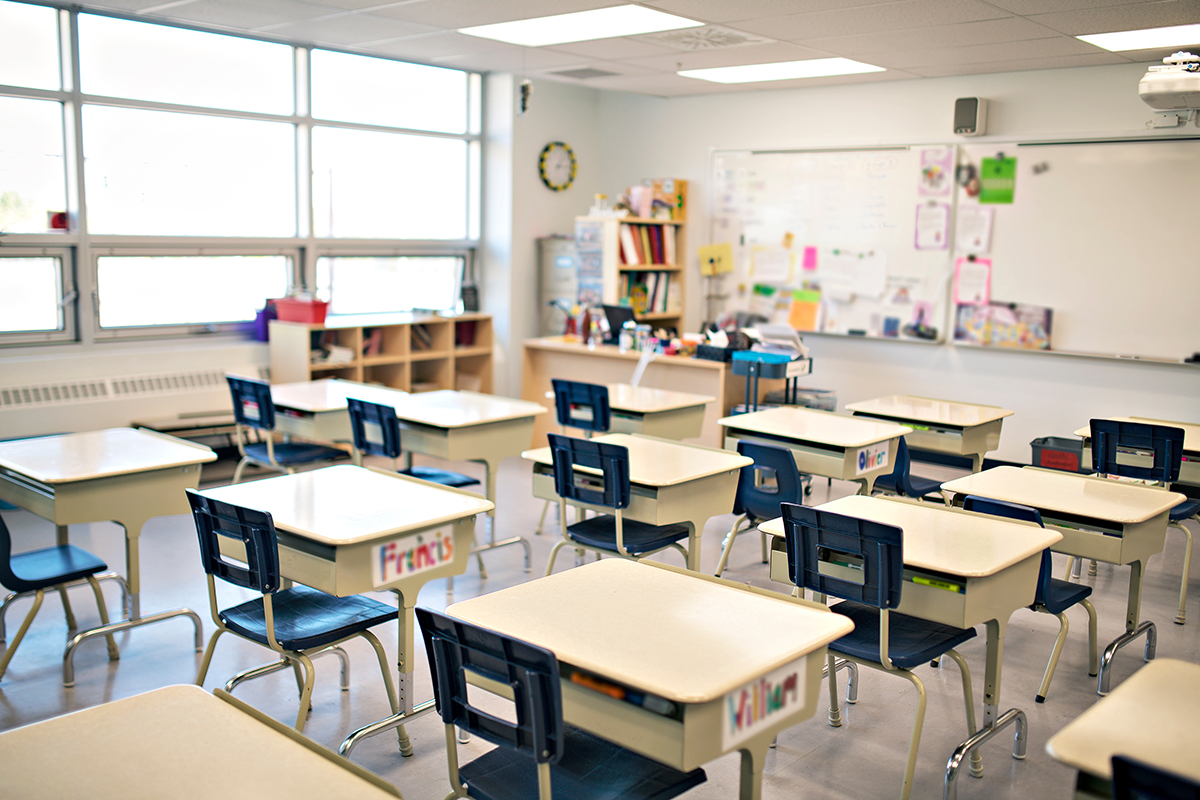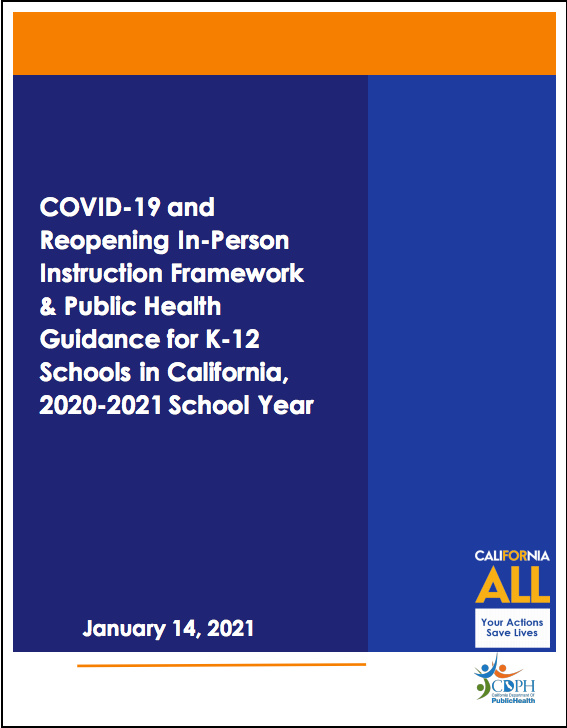 State health officials on Thursday announced updated guidance for K-12 schools, outlining requirements for campuses that have already reopened along with criteria for those planning to resume in-person instruction.
State health officials on Thursday announced updated guidance for K-12 schools, outlining requirements for campuses that have already reopened along with criteria for those planning to resume in-person instruction.
The 50-page document issued by the California Department of Public Health consolidates previous state directives and supersedes the last set of guidelines released in August.
Changes include new criteria for reopening school campuses under California’s Blueprint for a Safer Economy framework, which introduced a four-tiered system for tracking COVID-19 restrictions by county. There are also revised steps to take when a student or staff member is found to have COVID-19 symptoms and when a cluster or outbreak is under investigation.

As with previous versions, there is updated guidance on face coverings — students in all grade levels are required to wear them at all times unless exempt — and physical distancing in classrooms.
The CDPH has noted that children contract COVID-19 less frequently than adults, and they most often get it from a household contact. State health officials say transmission among students is uncommon, and the risk is low on elementary school campuses.
Adult-to-adult transmission is the most likely scenario for in-school transmission, but adults “are more likely to be able to adhere to policies for mitigation strategies such as masking and physical distancing.”
“Key mitigation strategies, studied in multiple settings and used successfully in schools nationally and internationally, allow for safe in-person instruction,” the CDPH writes in its guidance overview. “The thoughtful implementation of mitigation strategies, specific to school context, provides a careful and effective pathway forward as community transmission rates fluctuate.”
Titled “COVID-19 and Reopening In-Person Instruction Framework and Public Health Guidance for K-12 Schools in California, 2020-2021 School Year,” the document notes that “stable groups” of students can help prevent the transmission of the coronavirus. The term refers to groups with fixed membership that don’t mix with other cohorts.
Research suggests stable groups of students and staff can decrease opportunities for exposure and enable more efficient contact tracing in the event of a positive case. It also allows for targeted testing and quarantine procedures of a small group instead of a potential schoolwide closure. The state’s latest guidance features recommendations for how to create stable groups by grade level.
The Orange County Together guide that was developed by local educational leaders will be updated based on the latest state guidance, which can be found on the California Department of Public Health website.
